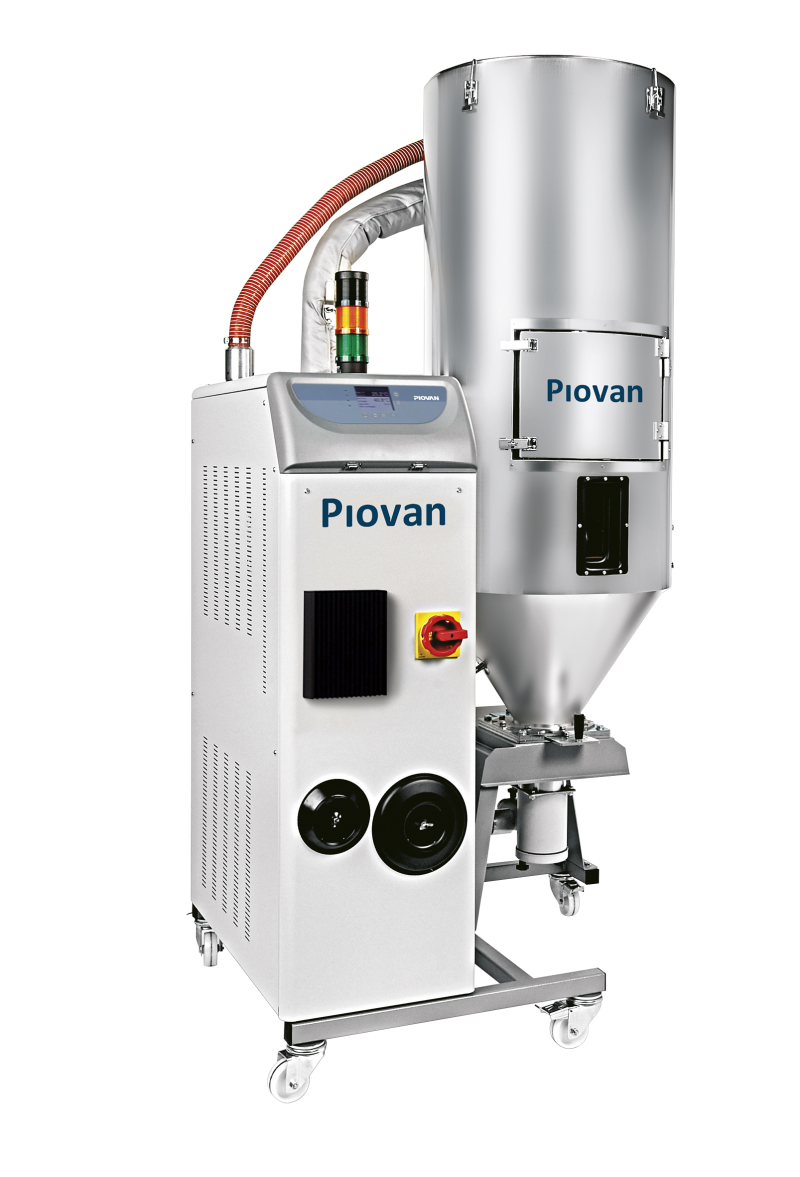HR desiccant rotor dryer

Technical information
By adopting the honeycomb desiccant rotor technology, the HR serie is able to ensure maximum energy efficiency and versatility of application in small and medium productions. Airflow ranging from 50 up to 300 m3/h, with a constant dew point value. Desiccant material (zeolite molecular sieves) is coated on the internal surface of the honeycomb structure guaranteeing a large absorbing capacity and zero dust emission. Continuous regeneration process and close loop cooling phase for higher performances and a constant dew point level.
Benefits
● Reduction down to 30% of the electric energy usage
● Constant dew point
● Dew point controlled operation without dew point probe
● No cooling water
● Regeneration power recovery
● Guaranteed absence of dust and of material contamination
● Patented circuit design
Customer oriented solutions:
Power saving versatility of application
No expense for the consumption or connection of cooling water or compressed air. The unit simply requires electricity for functioning.
Intelligent energy management
● Honeycomb rotor solution and complete recovery of the regeneration air
● Intelligent Energy Supervisor: in accordance with the effective requirements of the processing machine, the IES system optimises and adjusts the energy utilisation
● Intelligent Material Drying: optimises and adjusts the energy utilisation to prevent material thermal degradation or over-drying.
Flexible and modular configuration
Hoppers capacity from 100 to 800 dm³. The drying hopper can be installed on the processing machine or beside it, or placed on a trolley.
Both single-hopper and PTU multi-hopper versions are available
The HR Series is equipped with a microprocessor system which keeps the set temperature constant . From the control keypad it is possible to display and set the parameters and the working modes and see warning messages. Once the process temperature has been selected, the microprocessor automatically sets the safety temperature within the whole range of functioning temperatures, thus ensuring the maximum operational safety.
